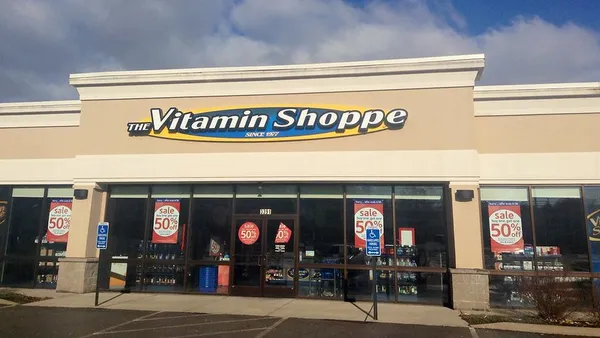Dive Brief:
- Toms Shoes owners have agreed to transfer ownership of the company over to creditors, according to a letter that the company's chief executive sent to staff.
- In the letter, CEO Jim Alling told employees that the company's current owners, Bain Capital and founder Blake Mycoskie, made a deal with investors led by Jefferies Financial Group, Nexus Capital Management and Brookfield Asset Management meant to "to identify the best path forward for our company."
- The deal includes a new $35 million investment in the business and an "enhanced capital structure," which reportedly entails debt relief. Reuters, which broke the story, reported that Toms would not have been able to pay back a $300 million loan due in 2020 had it not made a deal with creditors.
Dive Insight:
The deal Toms struck with its creditors may well have saved it a trip through bankruptcy, as the shoe seller has been in distress and struggling under its debt for some time.
Bain paid $313 million in 2014 for a 50% stake in the company, which touts its charitable giving tied to consumer purchases. At the time it was a growth investment, meant to help the company scale up. "This partnership will enable TOMS to grow faster and give to more people in more ways than we could otherwise," said Toms founder Blake Mycoskie in a press release at the time.
Bain committed to Toms' one-for-one charitable model, built into the company's brand, that gave away a pair of shoes to people need for every pair customers bought. That model, however, came under considerable criticism as being not very helpful, or even harmful by hurting local shoemakers. Toms responded by expanding its charitable enterprises and other moves.
Reuters reported that the company has suffered amid heavy discounting and competition in footwear and as the "novelty" of its giving model "wears off among consumers." As it struggled, the company carried one of Moody's lowest credit ratings, indicating high risk of default, and Fitch had the shoe seller on its "loans of concern" list.
In that respect, Toms' story is very similar to that of scores of apparel and footwear sellers in recent years. Leveraged companies fighting fierce competition on pricing and convenience, especially against ascendant online and off-pricers, are forced into bankruptcy or debt restructuring deals, if not liquidation.
Toms managed to avoid the worst-case scenario. It made a deal for its lenders to take over, which often happens in bankruptcy restructurings, and it did so without an expensive court process that could have done lasting damage to its brand.
But the hard work of turning around sluggish sales remains ahead. To that end, Alling told Toms employees that the new capital into the company "will enable TOMS to further invest in our promising growth areas and continue our commitment to giving."














